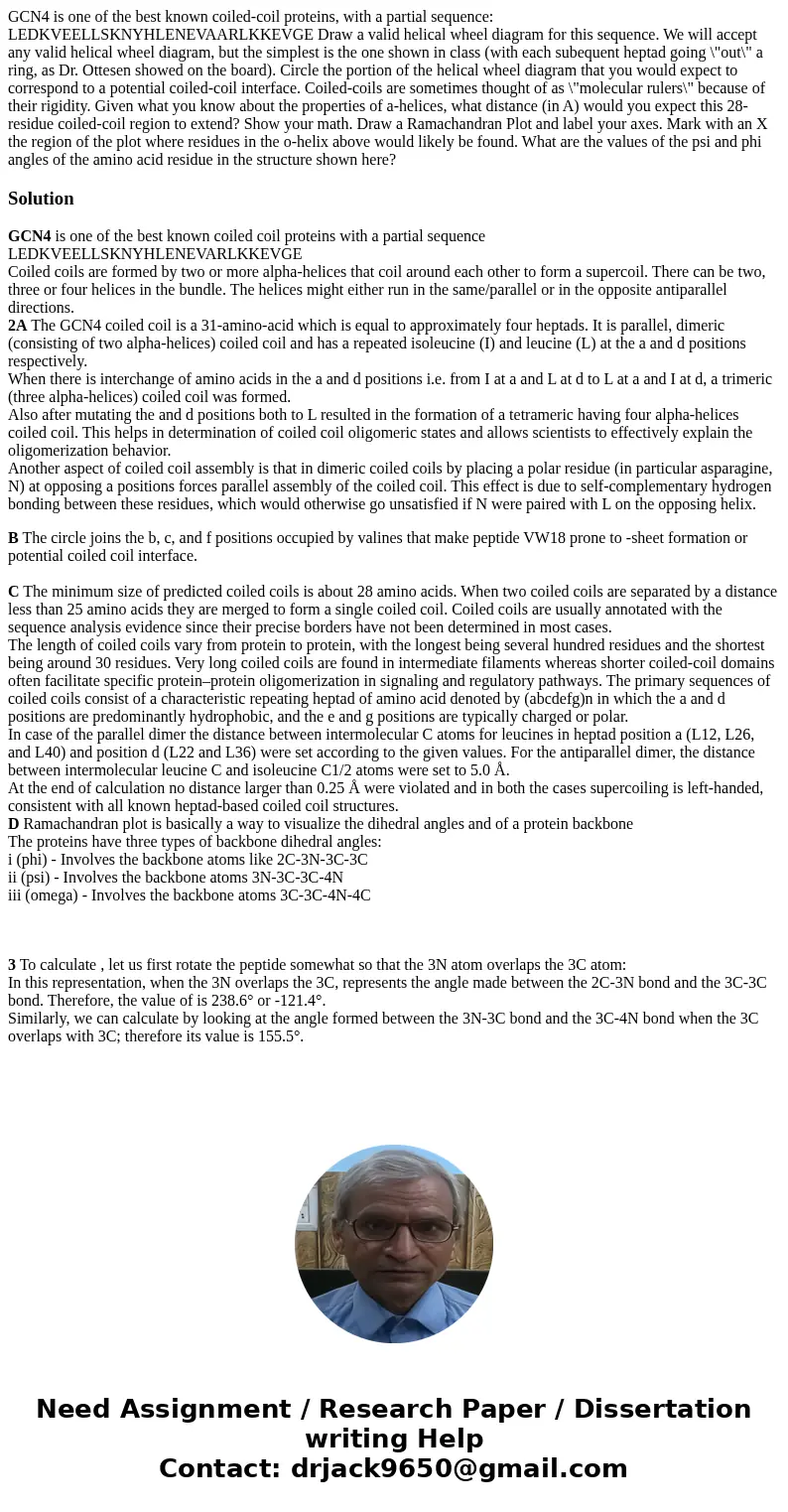GCN4 is one of the best known coiledcoil proteins with a par
Solution
GCN4 is one of the best known coiled coil proteins with a partial sequence LEDKVEELLSKNYHLENEVARLKKEVGE
Coiled coils are formed by two or more alpha-helices that coil around each other to form a supercoil. There can be two, three or four helices in the bundle. The helices might either run in the same/parallel or in the opposite antiparallel directions.
2A The GCN4 coiled coil is a 31-amino-acid which is equal to approximately four heptads. It is parallel, dimeric (consisting of two alpha-helices) coiled coil and has a repeated isoleucine (I) and leucine (L) at the a and d positions respectively.
When there is interchange of amino acids in the a and d positions i.e. from I at a and L at d to L at a and I at d, a trimeric (three alpha-helices) coiled coil was formed.
Also after mutating the and d positions both to L resulted in the formation of a tetrameric having four alpha-helices coiled coil. This helps in determination of coiled coil oligomeric states and allows scientists to effectively explain the oligomerization behavior.
Another aspect of coiled coil assembly is that in dimeric coiled coils by placing a polar residue (in particular asparagine, N) at opposing a positions forces parallel assembly of the coiled coil. This effect is due to self-complementary hydrogen bonding between these residues, which would otherwise go unsatisfied if N were paired with L on the opposing helix.
B The circle joins the b, c, and f positions occupied by valines that make peptide VW18 prone to -sheet formation or potential coiled coil interface.
C The minimum size of predicted coiled coils is about 28 amino acids. When two coiled coils are separated by a distance less than 25 amino acids they are merged to form a single coiled coil. Coiled coils are usually annotated with the sequence analysis evidence since their precise borders have not been determined in most cases.
The length of coiled coils vary from protein to protein, with the longest being several hundred residues and the shortest being around 30 residues. Very long coiled coils are found in intermediate filaments whereas shorter coiled-coil domains often facilitate specific protein–protein oligomerization in signaling and regulatory pathways. The primary sequences of coiled coils consist of a characteristic repeating heptad of amino acid denoted by (abcdefg)n in which the a and d positions are predominantly hydrophobic, and the e and g positions are typically charged or polar.
In case of the parallel dimer the distance between intermolecular C atoms for leucines in heptad position a (L12, L26, and L40) and position d (L22 and L36) were set according to the given values. For the antiparallel dimer, the distance between intermolecular leucine C and isoleucine C1/2 atoms were set to 5.0 Å.
At the end of calculation no distance larger than 0.25 Å were violated and in both the cases supercoiling is left-handed, consistent with all known heptad-based coiled coil structures.
D Ramachandran plot is basically a way to visualize the dihedral angles and of a protein backbone
The proteins have three types of backbone dihedral angles:
i (phi) - Involves the backbone atoms like 2C-3N-3C-3C
ii (psi) - Involves the backbone atoms 3N-3C-3C-4N
iii (omega) - Involves the backbone atoms 3C-3C-4N-4C
3 To calculate , let us first rotate the peptide somewhat so that the 3N atom overlaps the 3C atom:
In this representation, when the 3N overlaps the 3C, represents the angle made between the 2C-3N bond and the 3C-3C bond. Therefore, the value of is 238.6° or -121.4°.
Similarly, we can calculate by looking at the angle formed between the 3N-3C bond and the 3C-4N bond when the 3C overlaps with 3C; therefore its value is 155.5°.

 Homework Sourse
Homework Sourse